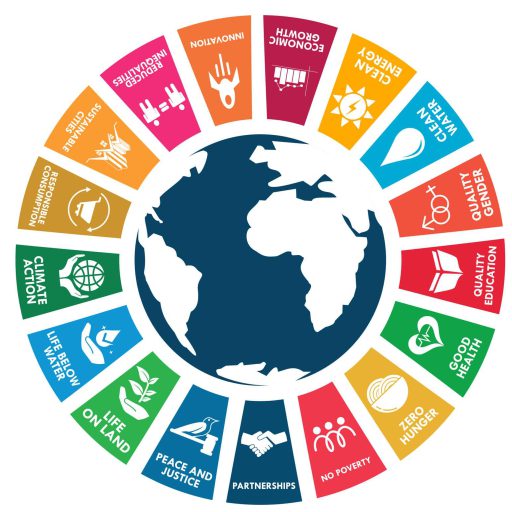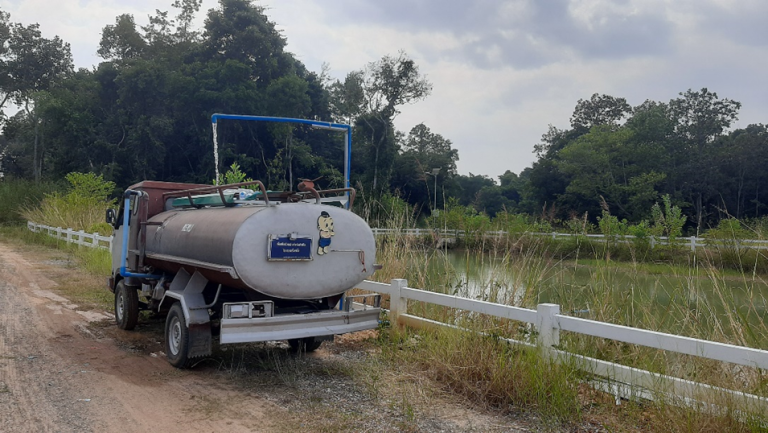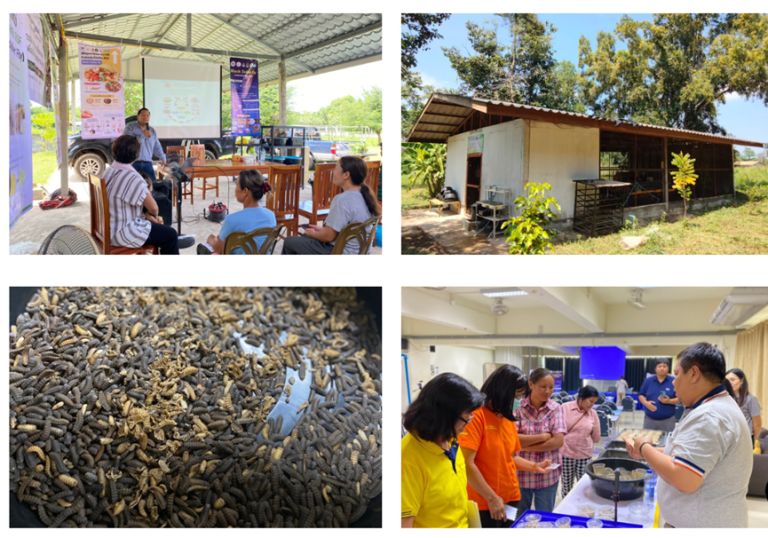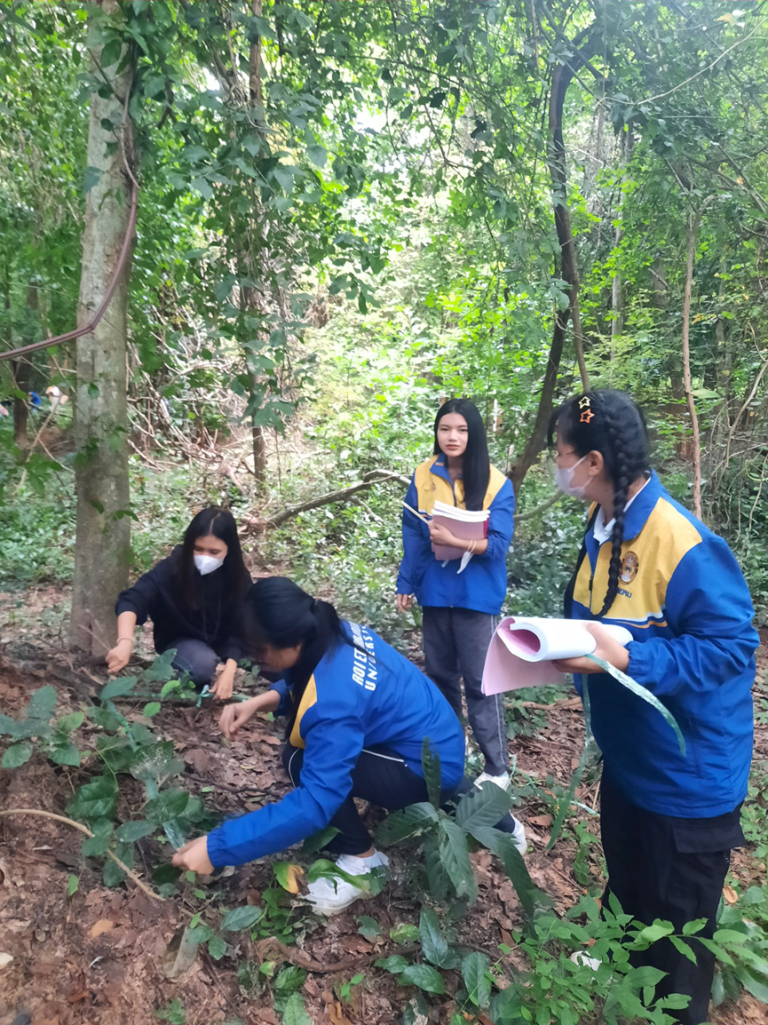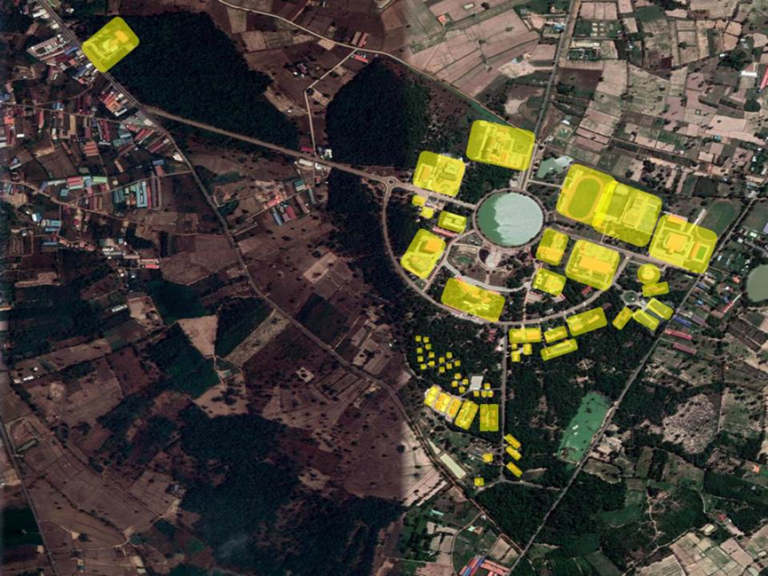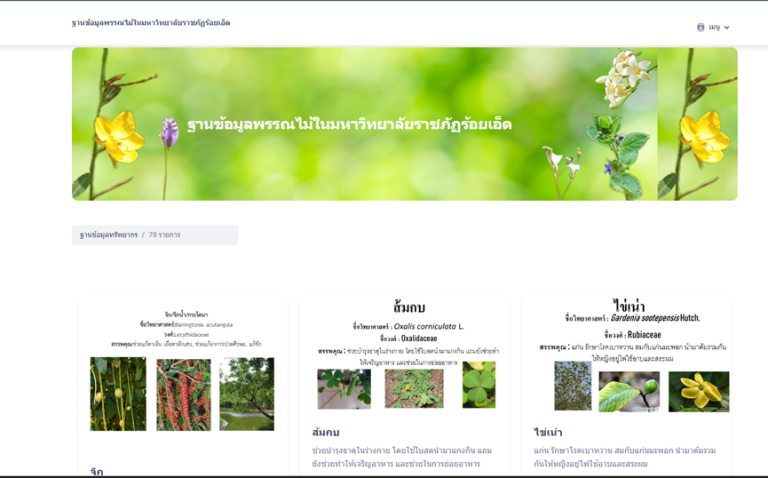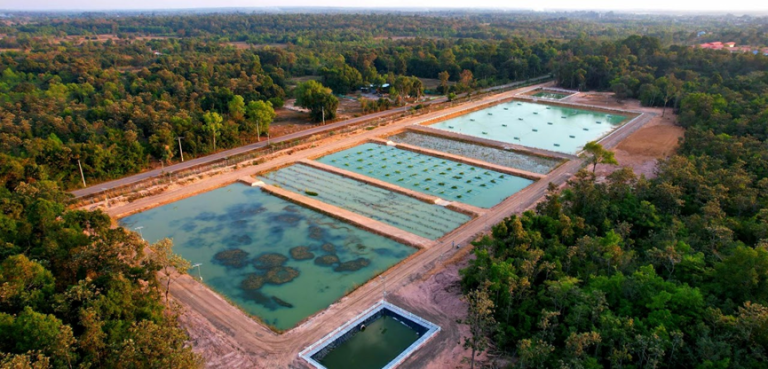Students and staff of Roi Et Rajabhat University received knowledge about reducing waste at the source. To create as little waste as possible (reduce) and receive education on waste separation in order to lead to an appropriate management process. Roi Et Rajabhat University has provided garbage collection points and garbage sorting bins. Which is divided into inorganic waste, recyclable waste, organic waste and hazardous waste.
Recyclable waste will be sold to the private sector. which is then taken into the recycling process into new materials. Organic waste is managed through soil fertilizer making. and some of it was used as food to feed the BSF. Resulting in producing products as soil improvers. And the larvae of the BSF are used as protein substitutes in animal feed that is part of the university’s food sustainability program, including laying hens, broilers, fish, etc. In addition, the university has organized training for interested farmers and nearby communities in breeding BSF. To help reduce organic waste from communities, homes, and agriculture in order to reduce the release of carbon dioxide and other greenhouse gases.
for hazardous waste, electronic waste were separate disposal area has been arranged. To be taken into the appropriate management process by the authorized agency. Hazardous waste, type of infectious waste It has been eliminated to have a garbage stop. And there is preliminary sterilization from the laboratory using steam pressure steaming. To prevent danger that may arise from the leakage of biological hazards. Then it leads to the management process by the network agency. including Selaphum Hospital Laboratory chemical waste It is stored, recorded and disposed of by a certified private entity and has standards for student safety, staffs, communities and the environment


Figure 1: Campaign on 3R and waste management for university /surrounding schools students


Figure 2 : Example of a waste disposal point with clear separation of each type of waste




Figure 3 : Waste separation facilities in canteen, food waste were used for BSF larva feeding

Figure 4 : Protocol for chemical waste management

Figure 5: Toxic waste storage & management in chemical laboratory, the procedure are according to ESPReL lab safety standards (Department of Science Service, Ministry of Ministry of Higher Education, Science, Research and Innovation, Thailand)


Figure 6 : Hazardous waste storage area, biohazardous waste from Health Science Service Center (left) and e-waste (right)

Figure 7 :Lab emergency training for staffs

Figure 8: Toxic waste treatment bills paid to authorized company
Additional evidences:
- https://sites.google.com/reru.ac.th/bsf101reru/home
- https://sites.google.com/reru.ac.th/reru-environment-safety-report/2023/2023-activities
- https://sites.google.com/reru.ac.th/reru-environment-safety-report/activities/bsf-raising
- https://drive.google.com/file/d/1-CVM_Q0V5NcNvyZe8J476RaKyPlvdZOC/view
- https://sites.google.com/reru.ac.th/reru-environment-safety-report/activities/toxic-waste-management?authuser=0
- https://sites.google.com/reru.ac.th/reru-environment-safety-report/activities/staff-training?authuser=0
